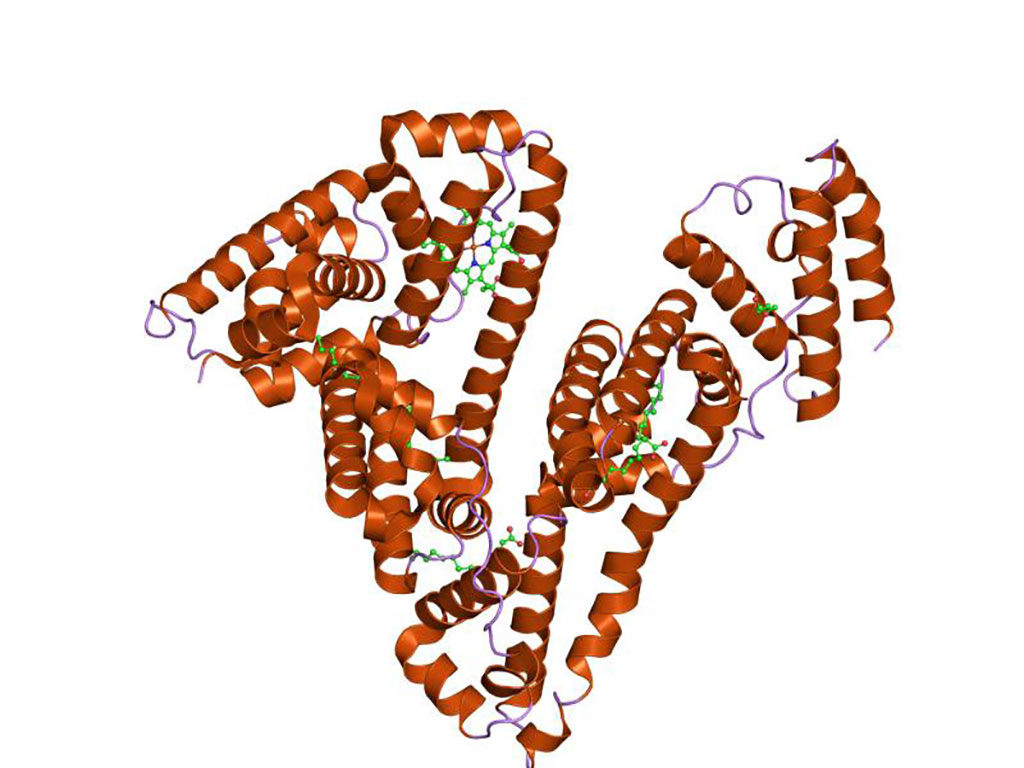Predicting Age by Profiling Circulating Plasma Proteins
By LabMedica International staff writers
Posted on 16 Dec 2019
It has been shown to be possible to calculate the age of an individual by measuring levels of various proteins circulating in the blood plasma.Posted on 16 Dec 2019
Aging is a predominant risk factor for several chronic diseases that limit longevity, and mechanisms that regulate aging have become increasingly recognized as potential therapeutic targets.

Image: Representation of the structure of human serum albumin, the most abundant protein in human blood plasma (Photo courtesy of Wikimedia Commons)
To evaluate biochemical factors linked to aging, investigators at Stanford University (Palo Alto, CA, USA) measured 2,925 plasma proteins from 4,263 young adults to nonagenarians (18–95 years old). Some of the samples came from the LonGenity study, which had accumulated blood samples from a cohort of exceptionally long-lived Ashkenazi Jews.
The investigators measured the levels of roughly 3,000 proteins in plasma samples from each individual. Results revealed 1,379 proteins with levels that varied significantly with participants' age. By employing a new bioinformatics approach that uncovered marked non-linear alterations in the human plasma proteome with age, the investigators were able to define a reduced set of 373 proteins that was sufficient to predict participants' ages with considerable accuracy.
The investigators also discovered waves of changes in the distribution of plasma proteins in the fourth, seventh, and eighth decades of life (roughly at ages 34, 60, and 78), which reflected distinct biological pathways and revealed differential associations with the genome and proteome of age-related diseases and phenotypic traits.
"We have known for a long time that measuring certain proteins in the blood can give you information about a person's health status - lipoproteins for cardiovascular health, for example," said senior author Dr. Tony Wyss-Coray, professor of neurology and neurological sciences, at Stanford University. "But it has not been appreciated that so many different proteins' levels - roughly a third of all the ones we looked at - change markedly with advancing age."
The study was published in the December 5, 2019, online edition of the journal Nature Medicine.
Related Links:
Stanford University














